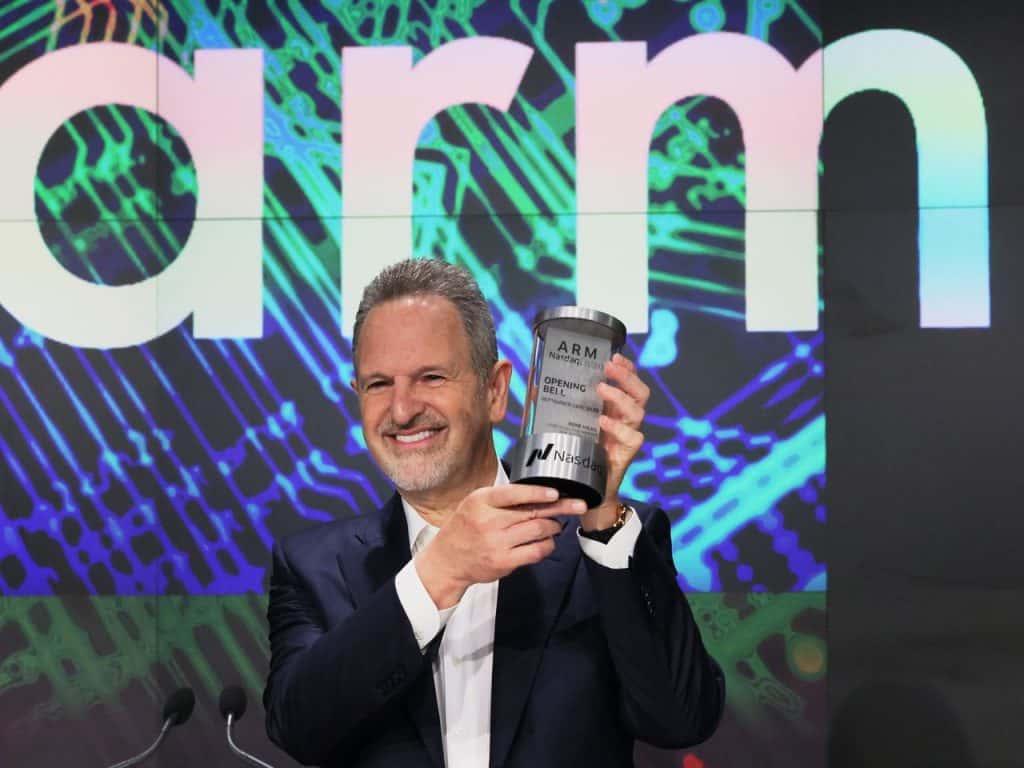
Arm’s (ARM) stock skyrocketed in its opening day on the Nasdaq Thursday. But IPO experts warn that the British chipmaker’s debut on the public markets isn’t indicative of how other newly listed companies may perform.
Arm, a formerly public company, was taken private by SoftBank in 2016. The well-established chip designer says it powers 99% of premium smartphones.
“It’s a licensing business model with mid-90s gross profit margins,”Greg Martin, a managing director at middle-market investment bank Rainmaker Securities, told Yahoo Finance Live. “So it’s a very different company. And I think we have to be careful about drawing insights … The next few new issuances are more likely truly representative of whether there’s a real reopening of the IPO market.”
The IPO market dried up last year, but investors are hoping for a rebound to end 2023. The next test will come on Tuesday when Instacart is expected to begin trading on the Nasdaq under the ticker symbol CART. Martin also has eyes on Klaviyo, a marketing and data automation platform, and Turo, a car sharing service.
Instacart is aiming for a valuation of up to $10 billion, a far cry from Arm’s valuation of $54.5 billion that made it the biggest IPO of the year so far.
The businesses are vastly different, too: Instacart is a consumer-facing grocery delivery app while Arm designs chips to go in smartphones.
“Arm is a mature, highly established, profitable company whereas most of the companies that go public are at an earlier growth stage and also not profitable,” said University of Florida Warrington College of Business professor Jay Ritter, who studies IPOs.
Broadly, the IPO market had been slowing. In 2021, 1,010 IPO deals were made per Dealogic. In 2022, that decreased to 173.
Ritter compares the current lull to similar slowdownsseen after the stock market crash in 1987 and the Great Financial Crisis.
“What we’re seeing here is we’ve had more than a year and a half now of very slow IPO activity, and the pattern is looking very similar to these previous periods where there was a big drop and then it took several years to get back to normal,” Ritter said.
While Arm may not symbolize an IPO boom, its debut may inspire other companies to get off the sidelines.
In a note titled “The IPO market is open for business!” Goldman Sachs’ chief US equity strategist David Kostin and his team highlighted how the Arm IPO could spark further activity.
Goldman Sachs said that stocks typically rally on their first trading day. From 1995 to 2019, IPO stocks typically rose by 10% on their first day of trading. During the 2020-21 IPO bubble, the average IPO stock rose 15%.
On its first day of trading, Arm surged 24%. Since then the stock has sold off, with shares now down about 10% since the IPO.
“After a two-year drought, the US IPO market re-opened this week in dramatic fashion,” Kostin wrote.
He added: “Investors should also consider valuations, as firms with high Price/Sales multiples at IPO rarely outperform.”
























